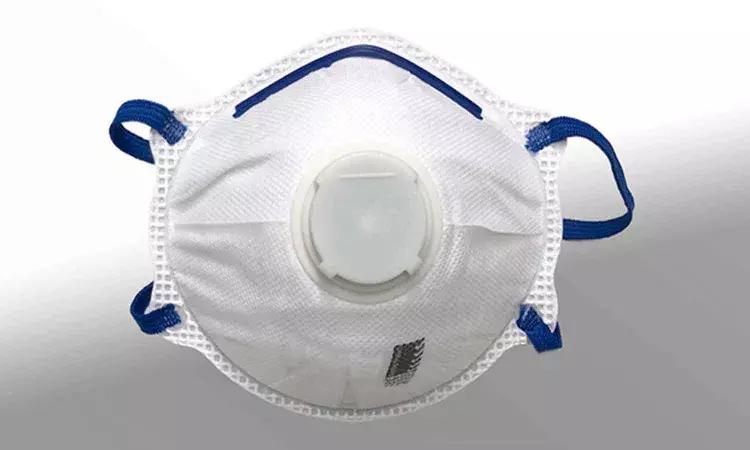- Home
- Medical news & Guidelines
- Anesthesiology
- Cardiology and CTVS
- Critical Care
- Dentistry
- Dermatology
- Diabetes and Endocrinology
- ENT
- Gastroenterology
- Medicine
- Nephrology
- Neurology
- Obstretics-Gynaecology
- Oncology
- Ophthalmology
- Orthopaedics
- Pediatrics-Neonatology
- Psychiatry
- Pulmonology
- Radiology
- Surgery
- Urology
- Laboratory Medicine
- Diet
- Nursing
- Paramedical
- Physiotherapy
- Health news
- Fact Check
- Bone Health Fact Check
- Brain Health Fact Check
- Cancer Related Fact Check
- Child Care Fact Check
- Dental and oral health fact check
- Diabetes and metabolic health fact check
- Diet and Nutrition Fact Check
- Eye and ENT Care Fact Check
- Fitness fact check
- Gut health fact check
- Heart health fact check
- Kidney health fact check
- Medical education fact check
- Men's health fact check
- Respiratory fact check
- Skin and hair care fact check
- Vaccine and Immunization fact check
- Women's health fact check
- AYUSH
- State News
- Andaman and Nicobar Islands
- Andhra Pradesh
- Arunachal Pradesh
- Assam
- Bihar
- Chandigarh
- Chattisgarh
- Dadra and Nagar Haveli
- Daman and Diu
- Delhi
- Goa
- Gujarat
- Haryana
- Himachal Pradesh
- Jammu & Kashmir
- Jharkhand
- Karnataka
- Kerala
- Ladakh
- Lakshadweep
- Madhya Pradesh
- Maharashtra
- Manipur
- Meghalaya
- Mizoram
- Nagaland
- Odisha
- Puducherry
- Punjab
- Rajasthan
- Sikkim
- Tamil Nadu
- Telangana
- Tripura
- Uttar Pradesh
- Uttrakhand
- West Bengal
- Medical Education
- Industry
Taping the upper mask edge tied to decrease in dry eye symptoms among N95 users: Study

New Delhi: In a new study conducted by researchers from AIIMS, New Delhi, it was found that taping the top mask edge improves ocular surface stability, which coincides with a reduction in dry eye symptoms. The findings of this study were published in the American Journal of Ophthalmology.
The goal of this prospective interventional before-and-after study was to determine how taping the upper mask edge influenced ocular surface stability, dry eye symptoms, and tear osmolarity in N95 mask users.
Fifty eyes from 50 healthcare professionals who commonly use N95 masks were included in the study. The subjects' pre-intervention, ocular surface characteristics, subjective dry eye score, and visual acuity were evaluated at the conclusion of an 8-hour shift while wearing an N95 face mask without taping the upper edge. The upper edge of the N95 mask was taped to the nasal bridge of all individuals at the start of the 8-hour shift the next day, and post-intervention evaluation was completed after the shift. The change in non-invasive tear break-up time was the primary outcome measure (NIBUT). Change in tear lipid layer thickness (LLT), symptom score, Schirmer I test, TBUT, tear meniscus height (TMH), osmolarity, and visual acuity were secondary outcome measures.
The key findings of this study are as follow:
1. The cohort's average age was 26.73.67 years. Post-taping, ocular surface stability was considerably improved in terms of NIBUT, TBUT, LLT, TMH, corneal staining score, and tear osmolarity.
2. There was no statistically significant difference in visual acuity, Schirmer I, or OSDI score.
3. 68% of patients (SANDE version 2) reported symptom improvement, which associated strongly with changes in NIBUT (r=0.38), TMH (r=0.37), LLT (r=0.35), and TBUT (r=0.28).
In conclusion, the benefits of taping the top mask edge for a relatively short period of time in normal persons are demonstrated in this study; the benefits may be much more obvious when measured over a longer period of time and in known cases of dry eye. More research is needed to determine the long-term effectiveness of taping the upper mask edge in both healthy people and those suffering from dry eye disease. Because frequent face mask usage is expected to continue in the foreseeable future, it is advised to practice taping the upper mask edge, particularly in occupations that need continuous face mask wear for lengthy hours.
Reference:
Nair S, Kaur M, Sah R, Titiyal JS. Impact of taping the upper mask edge on ocular surface stability and dry eye symptoms. Am J Ophthalmol. 2022:S0002-9394(22)00007-1. doi:10.1016/j.ajo.2022.01.006
Medical Dialogues consists of a team of passionate medical/scientific writers, led by doctors and healthcare researchers. Our team efforts to bring you updated and timely news about the important happenings of the medical and healthcare sector. Our editorial team can be reached at editorial@medicaldialogues.in.
Dr Kamal Kant Kohli-MBBS, DTCD- a chest specialist with more than 30 years of practice and a flair for writing clinical articles, Dr Kamal Kant Kohli joined Medical Dialogues as a Chief Editor of Medical News. Besides writing articles, as an editor, he proofreads and verifies all the medical content published on Medical Dialogues including those coming from journals, studies,medical conferences,guidelines etc. Email: drkohli@medicaldialogues.in. Contact no. 011-43720751


